On this page
KansasThis page lists books about birds and birdwatching in the US state of Kansas.The books are arranged by publication date with the most recent at the top of the page.
USAFor bird books that cover all, or a large part of, the USA see the following page:
USA bird books
|
|
|
|
Warblers in Your Pocket: A Guide to the Wood-Warblers of the Upper MidwestDana Gardner, Holly Carver
Bur Oak Laminated Field Guides: 28
University of Iowa Press
2016
"This newest addition to Iowa's popular series of laminated guides – the twenty-eighth in the series – illustrates the thirty-eight species of warblers that occur in the Upper Midwest states of Minnesota, Illinois, Nebraska, Kansas, North Dakota, South Dakota, Iowa, Indiana, Michigan, Ohio, and Wisconsin. For each species, artist Dana Gardner provides length, range, and habitat; he illustrates male, female, and immature birds where plumage varies; and he includes birds similar to warblers such as kinglets and vireos."
|
Buy from amazon.co.uk 
|
|
Midwestern Birds: Backyard GuideBill Thompson III
Cool Springs Press
2013
"Written by Bill Thompson III, the editor and co-publisher of Bird Watcher's Digest, this portable 5"x8" book contains the same variety of entertaining and informative entries that make Bird Watcher's Digest the nation's most popular birding magazine. Inside, you'll find profiles of the 55 most common birds in the Midwest, complete with large color photos, gender-specific physical descriptions, nesting and feeding information, bird call particulars, and interesting stories about each species. Thompson also introduces the reader to the basics of bird watching: essential gear, bird-friendly food and plantings, housing tips, and observational techniques. This guide covers Minnesota, Wisconsin, North and South Dakota, Iowa, Michigan, Illinois, Ohio, Indiana, Kentucky, Missouri, Arkansas, Kansas, Oklahoma, and Nebraska."
|
Buy from amazon.co.uk 
|
|
A Two-Hundred Year History of Ornithology, Avian Biology, Bird Watching, and Birding in Kansas (1810–2010)Thomas G. Shane
Zea Books
2012
"The first two centuries of bird study in Kansas essentially can be split into 50 year intervals since Zebulon Pike's 1810 publication, an account of his explorations. The first 50 years were records of explorers crossing Kansas collecting bird specimens; many were Army doctors. The second half of the 19th Century was a continuation of explorers and those affiliated with museums obtaining bird specimens and the establishment of colleges and universities with faculty members also collecting birds and making observations. The first half of the 20th Century was a period of college faculties primarily composed of vertebrate zoologists who had a few graduate students who studied birds. By 1960, active graduate programs were in place with many professors specializing in taxonomy, physiology, ecology, wildlife biology and behavior which continue to this day. Bird watchers and birders have also played an important role in the study of Kansas birds and continue to do so into the 21st Century."
|
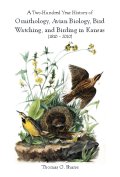 |
|
Wetland Birds of the Central Plains: South Dakota, Nebraska and KansasPaul A. Johnsgard
Zea Books
2012
"This 100,000-word monograph summarizes the distribution, abundance and breeding biology of the 183 species of wetland-adapted birds reliably reported from South Dakota, Nebraska and Kansas through 2011. These include 91 species known to breed or have historically bred in the region, 51 species that migrate through the region but are not yet known to breed or have bred there, and 41 species that are extremely rare, probably extinct, or for which evidence as to their current occurrence is questionable. Brief summaries of the breeding biology of all the regionally nesting species are provided, and information for all species is summarized as to seasonal migrations, habitats, and (in most cases) population status. There is an introductory account of the topography, climate and vegetation of the region insofar as these environmental factors influence wetland birds, six regional maps, and more than 500 references."
|
Buy from amazon.co.uk 
|
|
Birds of KansasMax C. Thompson, Charles A. Ely, Bob Gress, Chuck Otte, Sebastian T. Patti, David Seibel, Eugene A. Young
University Press of Kansas
2011
"Ever since the Lewis and Clark Expedition spotted its first wild turkey in Kansas, the state has celebrated a rich ornithological history - especially in light of its habitat diversity and its location within the Central Migratory Flyway. That birding bounty is now given its due by a respected team of authors, all recognized avian authorities, in a beautifully produced large-format volume highlighted with professional-quality color photographs and maps. The first such survey in twenty years, this remarkable book depicts every one of the state's now-documented 473 species. Designed for all knowledgeable birders and professional ornithologists, it provides scientifically accurate information on distribution, breeding, and behavior for each species. It not only significantly updates the previous two-volume field guide Birds in Kansas but also reflects a more than 10% increase in known species - 47 more than previously listed, including the Long-billed Murrelet, Ross's Gull, and Broad-billed Hummingbird. The contents are arranged by family - from abundant groups like Plovers and Sandpipers to the lone Frigate Bird recorded in the state. For each species, a map shows the counties in which it has been reported, and many species include maps for both breeding and banding. Use of color in the distribution maps allows depiction of seasonal bird distribution. The text also includes a brief life history for most regularly breeding species, as well as information on migratory routes explaining where the birds travel when they leave Kansas."
|
Buy from amazon.co.uk 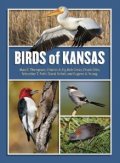
|
|
Birds of the Great Plains: Breeding Species and Their DistributionPaul A. Johnsgard
University of Nebraska-Lincoln Libraries
2009
This is a revised, electronic edition of a book that was originally published in 1980. This revised edition contains new range maps for many species, a new essay 'Three Decades of Change in Great Plains Birds,' and an updated bibliography of breeding bird surveys and state, regional, national, and species references.
"This book is the first to describe systematically all of the species of birds known to have bred or to breed at present in the Great Plains, a major ecological unit that encompasses all or part of part of eleven states: North Dakota, South Dakota, Minnesota, Iowa, Nebraska, Colorado, Kansas, Missouri, Oklahoma, New Mexico, and Texas."
|
 |
|
The Guide to Kansas Birds and Birding Hot SpotsBob Gress and Pete Janzen
Foreword: Kenn Kaufman
University Press of Kansas
2008
"The Guide to Kansas Birds and Birding Hot Spots focuses on 295 species that are most likely to be encountered in the state. It helps occasional day-trippers or backyard observers identify and learn about birds that regularly occur in Kansas, with stunning color photos that enable those new to the hobby to identify their discoveries, plus tips on where to search for these species with the greatest likelihood of success. Gress and Janzen have produced an exceptionally well-organized guide that divides birds into 18 groups based on similarity in appearance, habitat, or behavior, following taxonomic order only partially to make identification easier for the beginner. The entry for each bird gives its size, identifying features (including sexual and seasonal distinctions), and where and when it can be found. And each account includes a brilliant color photo of an adult of the species, with additional views of selected birds to illustrate male, female, or juvenile plumages. The authors point out the best birding locations in the state - more than two dozen hot spots of which they have intimate knowledge - that reflect utterly different bird communities thriving only a few hours apart. They also provide a checklist for all state birds, a calendar of Kansas bird activity, and recommendations for binoculars and other field guides."
|
Buy from amazon.co.uk 
|
|
Waterfowl in Your Pocket: A Guide to Water Birds of the MidwestDana Gardner
University of Iowa Press
2008
"A welcome aid to identifying the many colorful and intriguing water birds of the midwestern states, from the Great Lakes west to the Dakotas, east to Ohio, and south to Kansas and Missouri. Illustrator Dana Gardner has created fourteen panels showing fifty-one species of ducks, geese, swans, grebes, pelicans, coots, cormorants, moorhens, and loons swimming and flying with complete plumage variations - dark phases, light phases, and juvenile and adult male and female forms in summer and winter. The text also includes length, common and scientific names, and frequency and distribution. Whether flying high overhead in the fall or swimming in a nearby lake in the summer, waterfowl are notoriously difficult to identify, and Gardner has worked hard to make this guide useful for beginning birders as well as those more experienced in the field."
|
Buy from amazon.co.uk 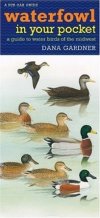
|
|
Compact Guide to Kansas BirdsTed Cable and Gregory Kennedy
Lone Pine Publishing
2007
"This book gives detailed accounts of 105 species of birds that can be expected in Kansas on an annual basis. As well as showing the identifying features of the bird, each species account also describes the bird's character traits. Information includes key identification markers, size, voice, status, habitat, nesting and illustrations of similar birds. Each account also includes a full-color illustration of the species and a range map."
|
Buy from amazon.co.uk 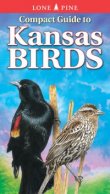
|
|
The Birds of Sedgwick County and Cheney ReservoirPete Janzen
Kansas Ornithological Society
2007
"The Birds of Sedgwick County and Cheney Reservoir summarizes the status of the 379 species of birds which have been found within Sedgwick County, southcentral Kansas, since the Civil War period. The abundance and seasonal occurrence of each species is discussed, along with breeding status, specimen data, and other information. A brief history of ornithology in the area is included, as well as maps and descriptions of productive birding locations throughout the country."
|
Buy from amazon.co.uk 
|
|
Birds of the Great Plains: Oklahoma, Kansas, Nebraska, South Dakota, North Dakota, Missouri, Iowa, Minnesota, Montana, Wyoming, Colorado, New Mexico and TexasBob Jennings, Ted Cable and Roger Burrows
Lone Pine Publishing
2005
"Encounter 325 of the most common or notable birds found in the Great Plains states, presented with beautiful full-color illustrations and comprehensive notes on habitat, nesting, feeding and voice, as well as best sites for viewing. 312 color illustrations, 313 maps."
|
Buy from amazon.co.uk 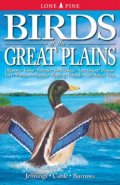
|
|
Faces of the Great Plains: Prairie WildlifeBob Gress and Paul A. Johnsgard
University Press of Kansas
2003
"The Great Plains are America's biological melting pot, drawing creatures from surrounding regions to create a rich diversity of wildlife. This book illuminates the enormous variety and uniqueness of prairie wildlife - featuring 150 of the most interesting and important species."
|
Buy from amazon.co.uk 
|
|
Kansas Breeding Bird AtlasWilliam H. Busby, John L. Zimmerman
University Press of Kansas
2001
"This book focuses on the 203 species that breed in the state - from the Green-winged Teal to the Great-tailed Grackle - to create an accurate and timely reference based on standardized methods of data collection. The Kansas Breeding Bird Atlas represents the efforts of 180 volunteers who diligently sought out birds over six years, observing their behavior and searching for active nests and fledged young throughout the state, whether in tallgrass prairies, riparian forests, or wetlands. In addition to these volunteers' efforts, Busby and Zimmerman gathered a wealth of information relating the observations to ecological factors affecting the birds' habitat selection. In the book, each species is conveniently presented in a two-page spread containing a line drawing, descriptive account, data summary table, distribution map, and, in most instances, a table of breeding status by physiographic region and BBS (Breeding Bird Survey) map. Breeding codes - possible, probable, or confirmed - are assigned in accordance with recommendations of the North American Ornithology Atlas Committee. The illustrations consist of classic drawings by Orville Rice and Robert Mengel, plus over one hundred new drawings by Dan Kilby."
|
Buy from amazon.co.uk 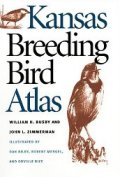
|
|
Birds of Kansas: Field GuideStan Tekiela
Adventure Publications
2001
"Learn about and identify birds using Stan Tekiela's state-by-state field guides. The full-page, color photos are incomparable and include insets of winter plumage, color morphs and more. Plus, with the easy-to-use format, you don't need to know a bird's name or classification in order to easily find it in the book. Using this field guide is a real pleasure. It's a great way for anyone to learn about the birds in your state."
|
Buy from amazon.co.uk 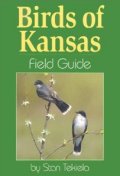
|
|
The Cast Iron Forest: A Natural and Cultural History of the North American Cross TimbersRichard V. Francaviglia
Corrie Herring Hooks Series
University of Texas Press
2000
"A complex mosaic of post oak and blackjack oak forests interspersed with prairies, the Cross Timbers cover large portions of south-eastern Kansas, eastern Oklahoma, and north central Texas. Home to Native Americans over several thousand years, the Cross Timbers were considered a barrier to westward expansion in the nineteenth century, until roads and railroads opened up the region to farmers, ranchers, coal miners, and modern city developers, all of whom changed its character in far-reaching ways. This landmark book describes the natural environment of the Cross Timbers and interprets the role that people have played in transforming the region. Richard Francaviglia opens with a natural history that discusses the region's geography, geology, vegetation, and climate. He then traces the interaction of people and the landscape, from the earliest Native American inhabitants and European explorers to the developers and residents of today's ever-expanding cities and suburbs."
|
Buy from amazon.co.uk 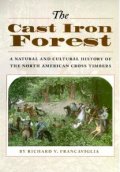
|
|
The Smithsonian Guides to Natural America: The Heartland: Illinois, Iowa, Nebraska, Kansas, MissouriSuzanne Winckler, Willard Clay, Charles Gurche, Michael Forsberg, Tom Till
Random House
1997
"Provides detailed descriptions of the national and state parks, wilderness preserves, natural sanctuaries, and other scenic wonders of America's heartland, furnishing information on the sites, their history, special activities, travel tips, and more."
|
Buy from amazon.co.uk 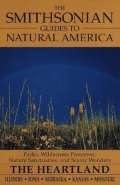
|
|
Messages from an OwlMax R Terman
Princeton University Press
1996
"When zoologist Max Terman came to the rescue of a great horned owlet in a Kansas town park, he embarked on an adventure that would test his scientific ingenuity and lead to unprecedented observations of an owl's hidden life in the wild. In "Messages from an Owl", Terman not only relates his experiences nursing the starving owlet, "Stripey", back to health and teaching it survival skills in his barn, but also describes the anxiety and elation of letting a companion loose into an uncertain world. Once Terman felt that Stripey knew how to dive after prey, he set the owl free. At this point his story could have ended, with no clue as to what the young bird's fate would be - had it not been for Terman's experimentation with radio tags. By strapping the tags to Stripey, he actually managed to follow the owl into the wild and observe for himself the behaviour of a hand-reared individual reunited with its natural environment. Through this unique use of telemetry, Terman tracked Stripey for over six years after the bird left the scientist's barn and took up residence in the surrounding countryside on the Kansas prairie. The radio beacon provided Terman with information on the owl's regular patterns of playing, hunting, exploring, and protecting."
|
Buy from amazon.co.uk 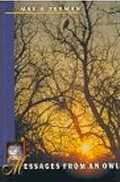
|
|
Cheyenne Bottoms: Wetland in JeopardyJohn L. Zimmerman
University Press of Kansas
1995
"Located in central Kansas, on the main migration highway between wintering grounds in South America and breeding territory in Canada, the 41,000 acre marsh called Cheyenne Bottoms is a critical refueling stop for migrating birds. It hosts 90% of the populations of five species of shorebirds as well as most of the remaining population of the endangered Whooping Crane and several other threatened and endangered species. Because of its critical role, it has been designated by treaty as a Wetland of International Importance. Ecologist/ornithologist John Zimmerman provides an introduction to the Bottoms that is at once personal, impassioned, and technically accurate. Narrating the history of the Bottoms from its formation 100,000 years ago to the present, he describes the rich variety of birds, mammals, and reptiles that depend on it and the intricate web of interactions among them that preserves the Cheyenne Bottoms ecosystem. But recently, Zimmerman notes, the fate of Cheyenne Bottoms has been determined by human history, not natural history. He describes the impact humans have had on the Bottoms and the complex problems created by irrigation, water rights disputes, and politics. He also chronicles the grassroots effort to save the Bottoms - a campaign that brought together conservation groups, garden clubs, grade school and high school students, and the state government. The struggle to preserve Cheyenne Bottoms, according to Zimmerman, is part of a global environmental battle that must be fought in our lifetime. "It has become the arena of confrontation," he writes, " between our desires to exploit the earth for our own short-term benefit and the altruism that will be required if we are to maintain the diversity and life-support systems of our planet. Cheyenne Bottoms is a focal point, a bridge at Concord, in the environmental revolution."
|
Buy from amazon.co.uk 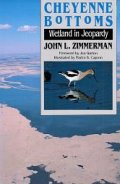
|
|
The Birds of Konza: The Avian Ecology of the Tallgrass PrairieJohn L. Zimmerman
University Press of Kansas
1993
"Konza Prairie, an 8,600-acre ocean of tallgrass cut by occasional stands of forests along streams and creeks, is a stomping ground or permanent home to more than 200 species of birds. Owned by The Nature Conservancy and administered by the Division of Biology at Kansas State University, the Prairies is located in the middle of the Flint Hills, which are covered by the last major remnants of virgin tallgrass prairie that once stretched from the eastern Dakotas to Oklahoma and east through Iowa and Illinois to Indiana and Ohio. Featuring a current synopsis of the seasonal occurrence, habitat preference, breeding status, and abundance for all 208 species that have been recorded on the site, The Birds of Konza provides a basis for comparisons to other habitats and geographic areas as well as the benchmark for continuing studies in the tallgrass prairie. It is the only long-term, comprehensive analysis of bird populations in both grassland and forested habitats in the region."
|
Buy from amazon.co.uk 
|
|
Birds in Kansas: Volume IIMax C. Thompson and Charles Ely
University Press of Kansas
1992
"Of the 424 bird species that have been recorded in Kansas, 208 are passerines, commonly known as songbirds or, more accurately, perching birds. They include most of the birds you'll see at your feeder, and many you won't: flycatchers, larks, swallows, jays and crows, titmice, wrens, thrushes, waxwings, wood warblers, blackbirds, tanagers, finches, and others. All 208 species found in Kansas are discussed in Birds in Kansas, Volume II. Abundantly illustrated with 199 photographs and 208 range maps, this handbook provides the only comprehensive, current, and authoritative treatment of the songbirds in the state. Written specifically for amateur birdwatchers and naturalists, both volumes of Birds in Kansas provide the reader with common and scientific names, distribution maps, photographs, and facts concerning reported occurrence, breeding habits, habitats, field marks (for identification), and food preferences."
|
Buy from amazon.co.uk 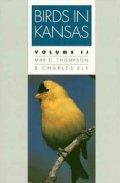
|
|
Birds in Kansas: Volume IMax C. Thompson and Charles Ely
University Press of Kansas
1989
"Kansas knows how to attract birds. Located in the very center of the North American continent, it straddles the Central Flyway, one of the primary migration "highways" between Canada and South America. It also contains a broad spectrum of habitats, including deciduous forest, grassland, sagebrush, and a remarkable system of internationally important wetlands. As a result of this unique combination of natural features, Kansas attracts most of the eastern bird fauna and many of the western and southern species, as well as those northern birds that either winter on the central plains or pass through during their migratory flights. The number of bird species recorded in the states is 424 - a total that places Kansas among the top five birding states in the country. Volume I of Birds in Kansas describes more than two hundred species of ducks, geese, gulls, herons, woodpeckers, shorebirds, birds of prey, and other non-passerines. This handbook provides the reader with common and scientific names, distribution maps, photographs, and facts concerning reported occurrence, breeding, habits and habitats, field marks (for identification), and food preferences."
|
Buy from amazon.co.uk 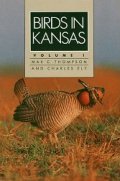
|
|
A Guide to Bird Finding in Kansas and Western MissouriJohn I. Zimmerman and Sebastian T. Patti
University Press of Kansas
1988
|
Buy from amazon.co.uk 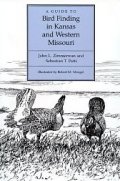
|
|
Birds of the Great Plains: Breeding Species and Their DistributionPaul A. Johnsgard
University of Nebraska Press
1980
"This book is the first to describe systematically all of the species of birds known to have bred or to breed at present in the Great Plains, a major ecological unit that encompasses all or part of part of eleven states: North Dakota, South Dakota, Minnesota, Iowa, Nebraska, Colorado, Kansas, Missouri, Oklahoma, New Mexico, and Texas. Although the original Great Plains ecosystem - the grassland biome - has been greatly altered by modem agriculture, remnants still exist in national and state parks, grasslands, and refuges, as well as in rural cemeteries, railroad rights-of-way, and small nature reserves. These areas support populations of nearly all the original and introduced birdlife - approximately 320 species - of the Great Plains."
|
Buy from amazon.co.uk 
|
|
Birds in Kansas
Arthur L. Goodrich
Illustration: Margaret Whittemore, Louis Agassiz Fuertes, and others
Kansas State Board of Agriculture
1946
340 pages with 6 colour plates and many figures in the text.
|
Buy from amazon.co.uk
Buy from amazon.com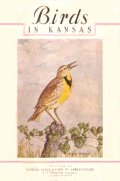
|
|